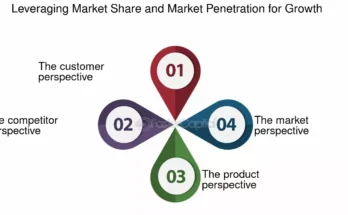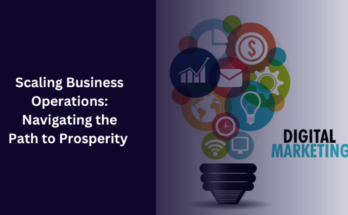Revenue optimization is a critical component of business success, especially as companies scale and compete in increasingly crowded markets. Simply generating more sales is not enough to guarantee profitability and long-term growth. Businesses must strategically manage pricing, costs, customer relationships, and operational efficiency to maximize revenue and ensure sustainable success.
In this article, we’ll explore key revenue optimization techniques that businesses can implement to boost their profitability while maintaining a healthy balance between growth, customer satisfaction, and operational efficiency.
1. Dynamic Pricing Strategies
One of the most effective revenue optimization techniques is implementing dynamic pricing. This involves adjusting prices based on various factors such as demand, competition, market conditions, and customer segments. Unlike static pricing, where prices remain fixed for extended periods, dynamic pricing allows businesses to maximize revenue by capitalizing on high-demand periods or responding quickly to competitive pressures.
For example, airlines and hotels often use dynamic pricing to adjust prices based on the availability of seats or rooms. During peak travel seasons or when there is high demand, prices increase to maximize revenue, while prices may drop during slower periods to encourage bookings.
Businesses can also implement dynamic pricing in e-commerce by using algorithms that track customer behavior, market trends, and competitor pricing. This allows companies to offer personalized pricing or discounts to specific customer segments, maximizing revenue while maintaining customer loyalty.
However, dynamic pricing must be used carefully. Overpricing during high-demand periods can drive customers away, while underpricing during low-demand periods can erode profitability. The key is finding the right balance and using data-driven insights to inform pricing decisions.
2. Upselling and Cross-Selling
Another powerful revenue optimization technique is upselling and cross-selling to existing customers. Upselling involves encouraging customers to purchase a higher-end product or add features to their current purchase, while cross-selling involves offering complementary products or services.
These techniques can significantly boost the average transaction value, which directly impacts revenue. For example, an e-commerce platform might recommend additional accessories when a customer is purchasing a smartphone, or a software company could offer premium features at checkout for an additional fee.
To implement upselling and cross-selling effectively, businesses should use customer data and analytics to identify relevant recommendations that align with the customer’s preferences and needs. Personalization is key—customers are more likely to respond positively to tailored suggestions that enhance their overall experience rather than generic offers.
Additionally, businesses should train their sales teams to identify upselling and cross-selling opportunities during customer interactions, whether online or in-store. Offering these options at the right moment, without overwhelming the customer, can result in higher revenue per transaction and increased customer satisfaction.
3. Customer Segmentation for Targeted Marketing
Revenue optimization often depends on a business’s ability to target the right customers with the right offers. Customer segmentation involves dividing the customer base into distinct groups based on criteria such as demographics, purchasing behavior, or preferences. This allows businesses to create tailored marketing campaigns and pricing strategies for each segment, maximizing the likelihood of conversion and customer retention.
For instance, a business may identify a segment of high-value customers who are willing to pay a premium for exclusive products or services. By offering personalized promotions or VIP experiences to this segment, the company can increase revenue from its most profitable customers. Meanwhile, a different segment might respond better to discounts or loyalty rewards, which can help boost revenue through repeat purchases.
Segmentation also helps businesses identify opportunities to increase customer lifetime value (CLV). By understanding the needs and behaviors of different customer groups, companies can implement strategies to retain valuable customers, encourage repeat business, and reduce churn.
4. Cost Reduction and Operational Efficiency
While increasing sales and optimizing pricing are important for revenue growth, reducing costs is another key aspect of revenue optimization. By streamlining operations and improving efficiency, businesses can increase their profit margins without necessarily raising prices or increasing sales volume.
One way to reduce costs is by automating routine tasks such as invoicing, inventory management, and customer service. Automation reduces labor costs and the potential for human error, leading to more efficient operations. Additionally, businesses should regularly review their supply chain and vendor contracts to identify opportunities for cost savings, such as negotiating better rates or sourcing more cost-effective materials.
Outsourcing non-core functions is another way to cut costs while maintaining operational efficiency. For example, businesses can outsource IT support, payroll, or marketing to third-party providers, allowing internal teams to focus on higher-value activities. This approach not only reduces overhead but also ensures that specialized tasks are handled by experts, improving overall business performance.
However, cost-cutting measures should not come at the expense of product quality or customer experience. Businesses must strike a balance between reducing costs and maintaining the level of service and quality that customers expect. When done correctly, optimizing costs can result in higher profitability without negatively affecting the customer’s perception of the brand.
5. Improve Customer Retention and Lifetime Value
Acquiring new customers can be costly, which is why improving customer retention is a highly effective revenue optimization strategy. By focusing on retaining existing customers, businesses can maximize the value of each customer over time, leading to increased revenue and profitability.
To improve customer retention, businesses should invest in building strong relationships with their customers through excellent customer service, personalized experiences, and loyalty programs. Providing a seamless and enjoyable customer journey from purchase to post-sale support can significantly reduce churn and encourage repeat business.
Loyalty programs are particularly effective in increasing customer lifetime value (CLV). By offering rewards, discounts, or exclusive benefits to repeat customers, businesses can incentivize continued patronage and larger purchases. A well-designed loyalty program not only boosts customer satisfaction but also provides valuable data on customer preferences and behavior, which can be used to further optimize revenue strategies.
Customer feedback is another essential tool for retention. By actively seeking input from customers and responding to their concerns, businesses can identify areas for improvement and enhance their overall experience, reducing the likelihood of losing customers to competitors.
6. Optimize Product and Service Offerings
Revenue optimization also involves regularly evaluating and refining product or service offerings. Businesses should focus on offering products or services that provide the highest value to customers while maximizing profitability. This might involve discontinuing underperforming products, developing new offerings that align with market demand, or bundling products to increase perceived value.
For example, a software company might offer a basic version of its product with the option to upgrade to a premium version that includes additional features. By offering tiered pricing or bundling services, the company can appeal to a broader range of customers while maximizing revenue from those willing to pay for premium options.
Regularly analyzing sales data, customer feedback, and market trends allows businesses to identify opportunities to refine their offerings and ensure they are meeting customer needs while optimizing profitability.
7. Leverage Data Analytics and Business Intelligence
Data analytics is one of the most powerful tools for optimizing revenue. By analyzing sales trends, customer behavior, and market conditions, businesses can make informed decisions about pricing, marketing, and product development.
For instance, businesses can use predictive analytics to forecast demand and adjust pricing or inventory levels accordingly. Similarly, analyzing customer purchasing behavior can reveal opportunities for cross-selling, upselling, or targeted marketing campaigns.
Business intelligence platforms can also provide real-time insights into key performance indicators (KPIs) such as conversion rates, customer acquisition costs, and profit margins. By tracking these metrics, businesses can identify inefficiencies, optimize marketing spend, and adjust strategies to improve overall revenue performance.
8. Expand Sales Channels and Partnerships
Diversifying sales channels is another effective way to optimize revenue. By expanding into new distribution channels—such as e-commerce, retail partnerships, or third-party platforms—businesses can reach new customers and increase sales volume.
For example, a business that primarily sells through its website could expand by partnering with major e-commerce platforms like Amazon or offering products in brick-and-mortar stores. These additional sales channels provide access to new markets and customer segments, ultimately boosting revenue.
Partnerships with complementary businesses can also enhance revenue optimization efforts. By forming strategic alliances or co-marketing initiatives, businesses can tap into new customer bases and offer bundled solutions that increase the overall value proposition for customers.
Conclusion
Revenue optimization is about more than just increasing sales—it involves implementing strategic techniques that maximize profitability, improve customer retention, and enhance operational efficiency. By focusing on dynamic pricing, upselling and cross-selling, customer segmentation, cost reduction, and leveraging data analytics, businesses can optimize their revenue streams and position themselves for long-term growth. With a balanced approach that prioritizes both revenue generation and cost management, companies can achieve sustainable profitability and thrive in today’s competitive market.



